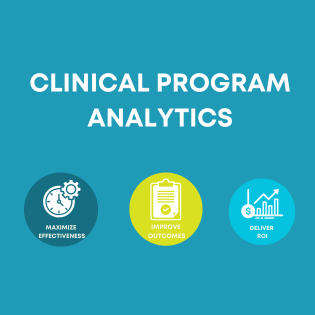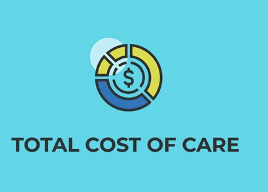Caring for People the 99.9% of the Time They’re not Patients
CMS did two things recently that triggered some thoughts for me:
- Unbundled a CPT code for Remote Patient Monitoring (RPM) for monitoring of patient biometrics
- Published a comprehensive report on the engagement (minimal) and impact (positive) from the existing Chronic Care Management (CCM) CPT code
These events reminded me of a presentation by an internal medicine physician at a Datapalooza event about 8 years ago. His statement that stuck with me was “I don’t lose sleep over the 30 patients I saw today or will see tomorrow; I lose sleep over the patients that I know are at risk that I am not going to see for a month or more.” US healthcare is so focused on payment for encounters in our facilities that we have neglected to consider the other 99.9% of the time when consumers are making a hundred decisions a day that impact their health – mostly with limited support or information.
The Times, They are a Changin’
But if the past belongs to a fee-for-service payment model based on face-to-face physician encounters, the future depends on the industry’s ability to turn that mentality on its head. And as recent news suggests, if the healthcare ecosystem can’t figure out how to address the gap in support, companies like Google, Amazon or even Walmart will.
Here are a number of reasons why now is THE time to act (and we don’t have the luxury of healthcare’s usual 17 year adoption cycle):
- CMS is taking a lead and other payers are following with reimbursement for engaging patients more consistently and longitudinally
- The IoT, ubiquitous data and everyone carrying a computer on their wrist or in their pocket provides the basis for a ridiculous (perhaps scary) level of support and insights; and, by the way, the technology costs keep going down
- As more of healthcare costs get pushed to consumers they will increasingly decide who their trusted health advisor will be; whether that is the primary care doctor or Google/Amazon – the remaining providers will be commoditized; competing on price with quality and experience being table stakes
- Gain sharing, pay for performance and risk models are here to stay and expand – organizations that can keep people healthy/manage costs versus fill up brick and mortar facilities will be the winners
A Smart Starting Point
I would suggest that a great place to start, based on the 80/20 rule as it applies to healthcare, would be with health consumers who suffer from multiple chronic conditions. This is the specific population that CMS is targeting with the new CPT codes and it happens to make up 70% of their beneficiaries. CMS research has demonstrated that more continuous engagement and monitoring of these key health consumers leads to better health status, lower healthcare costs and a positive ROI—results that are consistent with Amitech’s experience. If managed well, this care model can also provide a solid revenue stream for physician practices and health systems.
Numbers Don’t Lie
As a big believer in Edward Deming’s principle “In God we trust but all others must bring data” here are some basic data points to help paint the picture:
- CMS estimates that 70% of Medicare beneficiaries – roughly 35 million – would be eligible for the CCM service
- CMS has only received CCM claims for 684,000 beneficiaries during the first 2 years of the program
- The CCM services saved CMS money based on CMS’s recent report:
- Per patient spending for patients receiving CCM services dropped from $1,395 in 2015 to $1,192 in 2016
- In 2016 CMS paid roughly $52M in CCM fees and generated a net savings of $36M because those patients were less reliant on both inpatient and outpatient care
- The average CCM payment was $42 per patient per month and the RPM reimbursement has been estimated at $60 per patient per month
- A Stanford study estimated that the typical primary practice could see an increase in annual revenue (net of costs) of over $70,000 applying a nurse-based support model for the CCM program
Getting Ahead of Challenges
Implementing the models to support these services is not simple. Potential challenges include the required 20% copays, shifting to more nurse/educator versus physician engagement and some scale being required to be successful. However, any large physician practice or health system with a reasonable number of employed primary care physicians should be in a position to develop or contract for support, as needed.
I have been working in innovation in the healthcare space for over 20 years and we have been doing pilots waiting for the day when more continuous and supportive models – especially around chronic care - would be viable. The combination of the increase in reimbursement models and lower cost of technology would indicate it is time for these models to scale. Advanced data analytics and the resulting insights will enable a new level of health innovation which can only be applied in a more engaged health model – but that is a subject for another post.
I would appreciate feedback, especially counter views, on these perspectives – data is always helpful.





